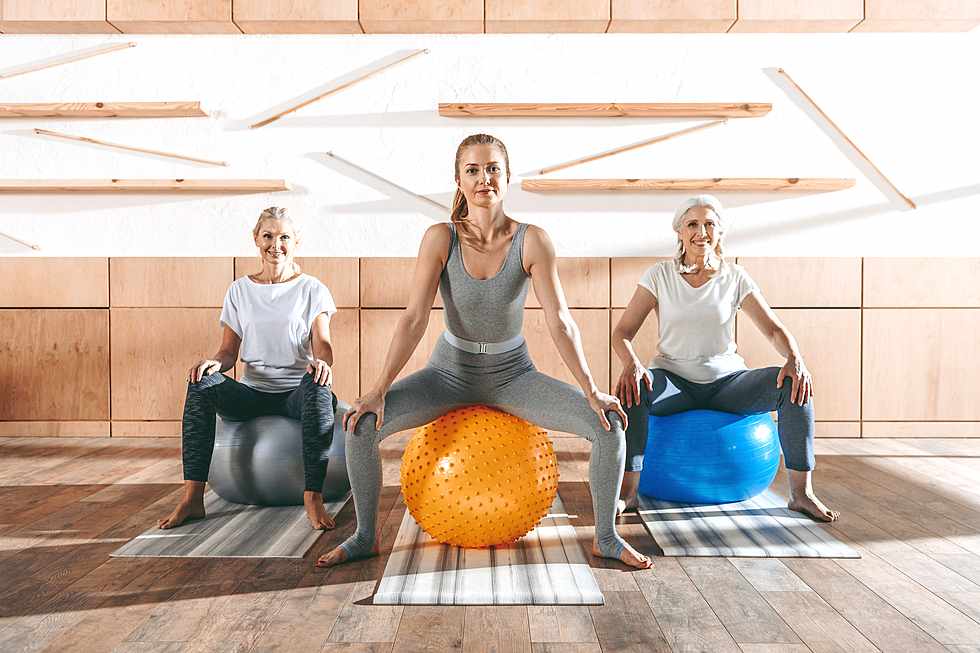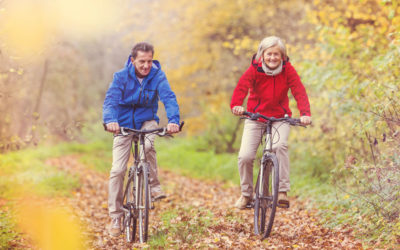Physical activity is always a good thing. The health benefits it provides are countless. It doesn’t necessarily have to be in a gym or in sports, physical activity can simply be going out for a nice stroll. Any form of exercise is warranted to do you good. Lack of physical activity is everywhere around us nowadays, especially with everything imaginable being available for ordering online. It has never been easier to live a sedentary life. That’s why it’s important, now more than ever, to keep yourself active and not succumb to our comfy sofas, chairs, and beds. The health benefits of physical activity are ours for the taking!
Want to learn more? Keep reading the article by Dr. Jocelyne Melchior-Capiot!
“Mens sana in corpore sano”
The technological improvements and the comfort of our modern life tend to make us sedentary and thus harm our well-being and health. According to recent representative surveys, one-third of the Swiss population is inactive!
In addition to the significant benefits to general health, regular physical activity helps to control weight, improve self-esteem, feel more physically and mentally fit, relax and control stress.
What is “physical activity”?
Physical activity includes any form of bodily movement produced by the contraction of skeletal muscles and resulting in an increase in energy expenditure above the resting metabolism.
Exercise is defined as a form of physical activity, whether sport or leisure, that is structured and performed repeatedly over a period of time, with the specific purpose of improving performance or a component of physical fitness.
Let’s review these multiple benefits…
- Cardiovascular: Cardiovascular diseases are the leading cause of premature death. Let’s mention coronary heart disease, arteriosclerosis, and strokes. Like smoking, high blood pressure, diabetes, or high cholesterol, physical inactivity is a cardiovascular risk factor. Physical activity can reduce the risk of developing diabetes in middle age by 50%. It is also highly recommended for controlling blood pressure and improving lipid (cholesterol) profile.
- Obesity and overweight: physical activity promotes fat loss and improves body composition and mass. Active people are less likely than others to be overweight.
- With regard to cancer: several studies show a strong reduction in the risk of colon cancer through regular physical activity. The same applies to women with regard to protection against breast cancer.
- For the musculoskeletal system: regular and appropriate physical activity improves flexibility, strengthens muscles, and ensures better coordination of movements. In inflammatory rheumatic diseases (rheumatoid arthritis, ankylosing spondylitis), regular, gentle physical activity enables people with rheumatism to function better in their daily lives, relieve their painful symptoms, and to achieve a better quality of life (rheumatoid arthritis, ankylosing spondylarthritis), regular, gentle physical activity helps sufferers to function better in everyday life, relieve their pain symptoms and achieve a better quality of life.
- With regard to osteoporosis (demineralization of the bones): around 25% of women over the age of 50 and 50% of women over 70 suffer from osteoporosis. Regular physical activity with feet in firm contact with the ground (walking, dancing…), in addition to adequate dietary intake of calcium and vitamin D, reduces the risk of developing osteoporosis.
- From a psychological point of view: after intense and prolonged exertion, there is an increased release of endorphins, so-called happiness hormones, in the organism. Especially when practiced in the great outdoors, physical exercise improves mood and reduces depressive disorders. There is an improvement in the quality of sleep and, especially in single people, social bonds are strengthened and maintained.
- In people of 50 years and over…. it is found that regular, appropriate physical activity improves overall body strength, leg strength, joint mobility, coordination of different movements. Thanks to the regained energy, a safer way of walking, less fear of falling, a significant reduction in the risk of falling are observed. Thus, scientific findings prove that maintaining physical fitness in seniors can reduce the frequency of their hospitalizations, maintain their independence and improve their quality of life.
What activity should you choose?
You don’t need to train like an athlete for the Olympics, walk or drive far or buy expensive equipment! Every energy use – no matter how small – counts. For example, washing the dishes, mowing the lawn, walking the dog, vacuuming, preferring the stairs to the lift, making love…. To stay in good health, it is important to make sure that physical activities train three things: Endurance, muscle strength, and mobility.
The different types of physical activity endurance
These activities aim to improve the efficiency of the cardiovascular system (heart and lungs). These are all activities that make us breathe faster, make our heart beat a little faster, make us sweat, while still being able to talk.
Examples: Walking, household chores, recreational sports (dancing, walking, swimming, ice skating, snowshoeing, cross-country skiing, cycling, athletic walks…)
Muscle Strength
Increasing and maintaining muscle strength is the goal of these activities, which make the muscles work and improve posture.
Examples: Muscle training using equipment or weights, climbing stairs, sawing and stacking wood, standing up from a sitting position, carrying shopping bags, carrying a backpack full of books…
Mobility
The aim of these activities is to increase the range of motion around the joints; they help to stretch the muscles and promote flexibility. These activities are gentle stretches, bends and stretches. which stretch and loosen the different muscle groups.
Examples: Curling, dancing, golfing, gardening, bowling, yoga, vacuuming, Tai-chi …










